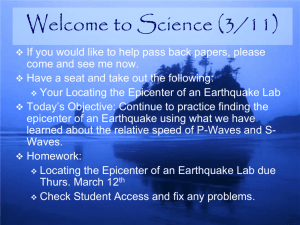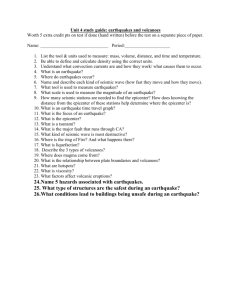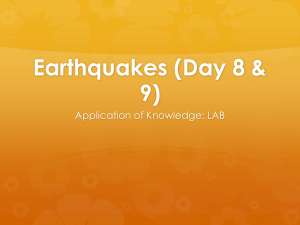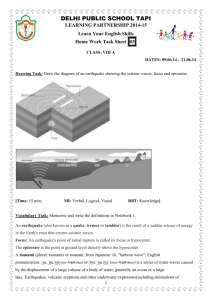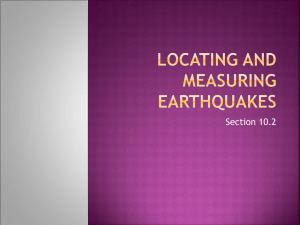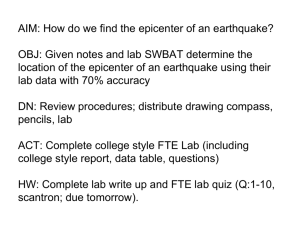Earthquakes in
advertisement
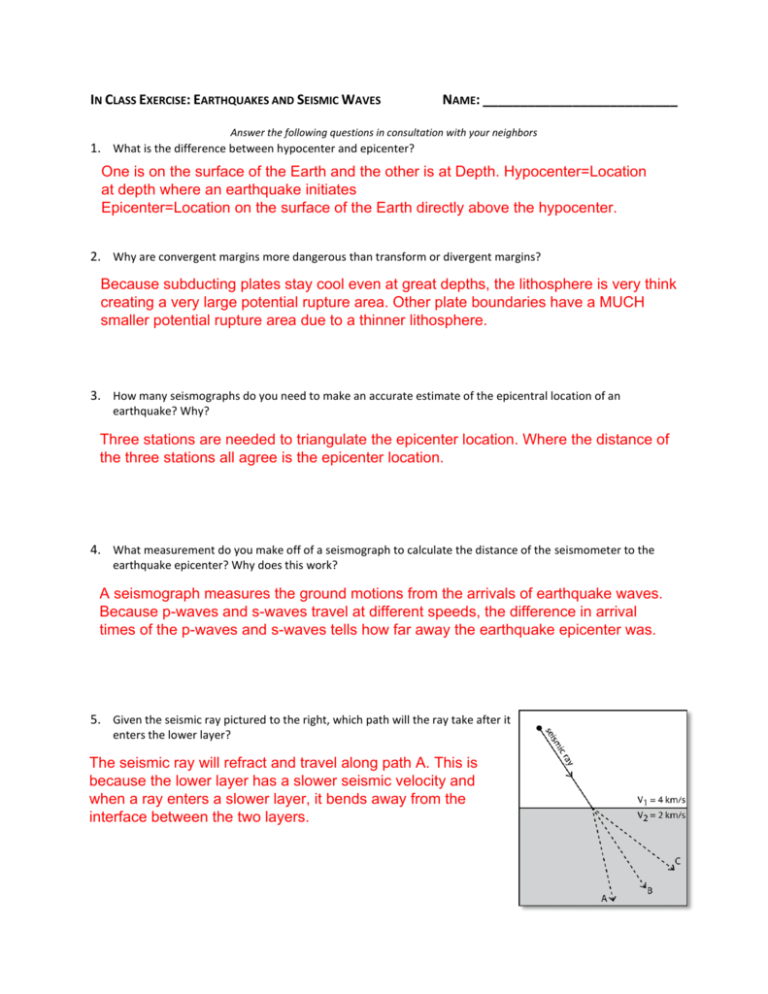
IN CLASS EXERCISE: EARTHQUAKES AND SEISMIC WAVES NAME: __________________________ Answer the following questions in consultation with your neighbors 1. What is the difference between hypocenter and epicenter? One is on the surface of the Earth and the other is at Depth. Hypocenter=Location at depth where an earthquake initiates Epicenter=Location on the surface of the Earth directly above the hypocenter. 2. Why are convergent margins more dangerous than transform or divergent margins? Because subducting plates stay cool even at great depths, the lithosphere is very think creating a very large potential rupture area. Other plate boundaries have a MUCH smaller potential rupture area due to a thinner lithosphere. 3. How many seismographs do you need to make an accurate estimate of the epicentral location of an earthquake? Why? Three stations are needed to triangulate the epicenter location. Where the distance of the three stations all agree is the epicenter location. 4. What measurement do you make off of a seismograph to calculate the distance of the seismometer to the earthquake epicenter? Why does this work? A seismograph measures the ground motions from the arrivals of earthquake waves. Because p-waves and s-waves travel at different speeds, the difference in arrival times of the p-waves and s-waves tells how far away the earthquake epicenter was. 5. Given the seismic ray pictured to the right, which path will the ray take after it enters the lower layer? The seismic ray will refract and travel along path A. This is because the lower layer has a slower seismic velocity and when a ray enters a slower layer, it bends away from the interface between the two layers.


